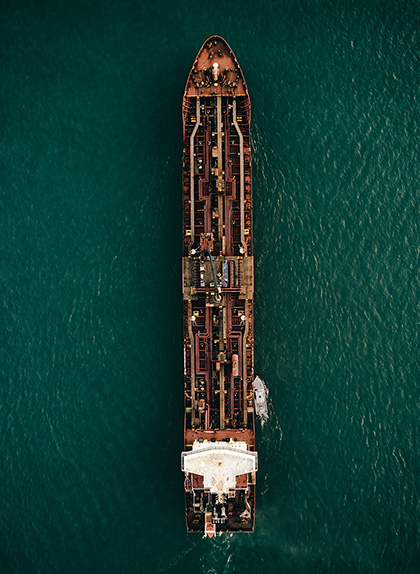Evacuations from High-Risk Locations Call +44 (0)1202 308810 or Contact Us →

UKMTO Clarifies Threats When Transiting the High Risk Area – Maritime Security Advisory
10 Aug 2017
The increase in suspicious approaches and piracy attacks in 2017, along with the ongoing civil war in Yemen, required the UKMTO to clarify their recommendations for vessels transiting the Bab El Mandeb Strait during daylight or dark hours. Overall, vessel operators remain responsible for conducting risks assessments on each voyage and should implement BMP4 measures to the fullest extent possible.
Key Points
- Due to an increase in recent attacks, the UKMTO has updated their advice to vessels transiting the Bab El Mandeb Strait.
- Vessels are equally exposed to varying threats during daylight or dark hours.
- BMP4 measures are still recommended to be followed to the maximum extent possible.
Situation Summary
Maritime: The increase in suspicious approaches and piracy attacks in 2017, along with the ongoing civil war in Yemen, required the UKMTO to clarify their recommendations for vessels transiting the Bab El Mandeb Strait during daylight or dark hours. This comes after the CMF released an update in July 2017, recommending vessels to transit the strait in dark hours to mitigate being targeted by piracy action groups. A number of attacks have been made on vessels during daylight hours in the last year. This includes the MT Muskie on the 31 May 2017, in which it was reported 3 RPGs were fired at the vessel, leading to vessel damages. Although there have been no successful attacks on vessels this year, the spike in activity, combined with threat of Waterborne Improvised Devices (WBIED), indicates the threat towards merchant shipping remains considerable. The identity of most of the attackers remains unknown, however the use of small arms and rocket propelled grenades is still evident in some incidents. On the other hand, the conflict in Yemen leads to an increased threat at night of being mistargeted by Houthis firing missiles. Overall, vessel operators remain responsible for conducting risks assessments on each voyage and implement BMP4 measures to the fullest extent possible. This applies to vessels transiting from the Gulf of Aden to the Red Sea and vice versa, between 44E in the Gulf of Aden and 13N in the Southern Red Sea.
Yemen’s Civil War
The entirety of Yemen’s coastline and territorial waters remain within the High Risk Area (HRA). The maritime area surrounding Yemen is highly militarised, and poses a high risk to commercial vessels operating in the area. In addition, there is an increasing fear that the conflict affecting mainland Yemen may begin to impact vessels in Yemeni waters. On 30 January 2017, a Saudi Naval boat was attacked off the coast of Al Hodeidah. On 25 April 2017, the Saudi Royal Navy reported that it had destroyed a remote-controlled explosive boat advancing towards the Jizan region of Saudi Arabia. It is thought that the target was a Saudi Aramco pipeline. The result is that the conflict in Yemen is producing increasing maritime threats, including the potential for maritime terrorism. On 29 July 2017, Houthis targeted Al Mokha Port with a boat carrying explosives, which was reported to have collided with a pier causing an explosion. On this occasion no significant damages were reported. Saudi and UAE coalition vessels have been targeted multiple times, with land based missile systems targeting coalition vessels. In addition to this, there have been reports of naval mines being used by Houthi rebels. A Yemeni Coastguard vessel reportedly struck a naval mine near the port of Al Mokha in March 2017. The risk of such mines is highest in Yemen’s western territorial waters, where ports and land areas are controlled by Houthi rebels.
Return of piracy?
The increase in recent piracy activities is a result of continued instability in Somalia and a perceived growing complacency by shipping companies towards vessel security. In May 2017, a MIEVOM meeting in Dubai stated there are currently an estimated eight Pirate Action Groups (PAGs) operating in the region. Local Somali forces have been involved in releasing the vessels, demonstrating their growing capacity and ability to negotiate with PAGs, although it currently remains unconfirmed whether ransoms have been paid for crew or vessel release. Drought conditions in Somalia have further exacerbated conditions and provided further incentive for a return to piracy. The OS 35, attacked and boarded on 8 April 2017, was the first large bulk carrier to be boarded by Somali pirates in recent years. The recent attempted attacks on the Alheera and Costina, also in April, indicates a continued desire from Somali pirates to target larger vessels. Some reports have stated the cost of Somali piracy has increased in 2016 to $1.7 billion. Prior to this, the cost of Somali piracy had undergone a downward trend from $7 billion since 2010. International naval patrols, along with BMP4 anti-piracy measures, continues to be the most effective measures responsible for reducing incidents of vessel hijackings.
SECURITY ADVICE
Maritime PiracyHighVessels transiting the HRA should maintain a heightened level of surveillance, particularly when passing through the Bab El Mandeb Strait. Houthi rebels have primarily targeted coalition warships, however there have been numerous reports of attacks and suspicious approaches on merchant vessels transiting the Bab El Mandeb Strait. Houthi naval mines have also been reported uncovered and diffused along Yemen’s coastline. It is advised all vessels transiting the HRA to proceed with extreme caution and conduct a thorough risk assessment on each voyage, considering the risk of transiting the strait during daylight or dark hours. Vessels should ensure all BMP4 measures are in place, with the use of hardening vessel measures, and armed security. Solace Global advise, and have implemented, 24-hour anti-piracy watches when transiting the strait.